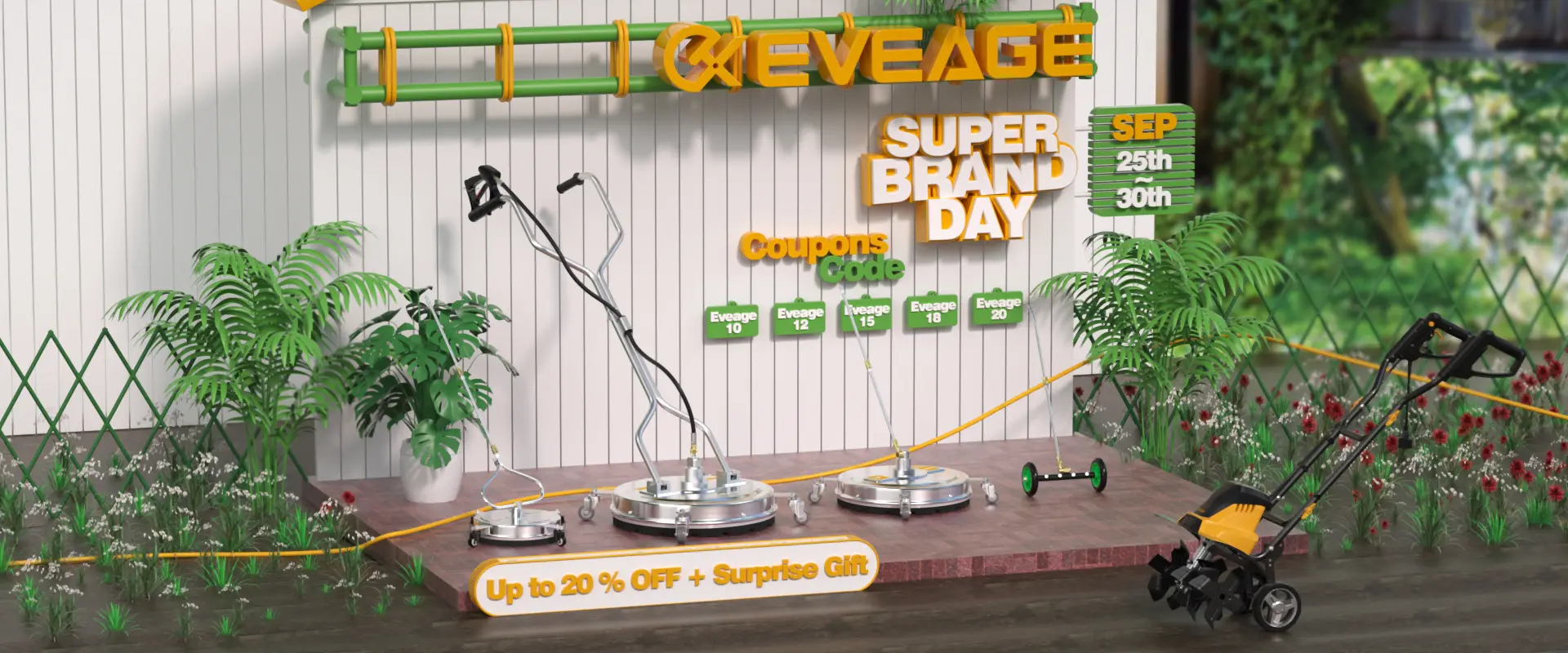The technology used in pressure washer surface cleaner uses high-pressure water jets to remove dirt, grime, and dust from various surfaces. The most critical aspect of pressure washing is nozzle selection.
Nozzles are not one-size-fits-all. They come in various shapes and sizes and each of them is tailored to specific cleaning tasks. Before using a pressure washer surface cleaner you must know about how nozzle selection will affect the pressure and cleaning efficiency.
This article will let you know all about nozzles and how to choose the right nozzle for the job. Read till the end to have the best cleaning experience.
What is PSI?
PSI or Pounds per Square Inch, is an important metric in pressure washing. It measures the force of the water being delivered by the pressure washer surface cleaner. It determines the intensity of the cleaning process. PSI is important because it directly influences the machine’s ability to remove dirt and stains effectively.
If PSI levels are higher it means that pressure is greater and you can get more cleaning power. However, low PSI means low pressure and minimum cleaning. Understanding the PSI of a pressure washer is essential for selecting the right equipment and nozzle to achieve optimal cleaning results and avoid potential damage to surfaces.
Factors Affecting PSI in pressure washers
There are many factors that impact the PSI output of a pressure washer. These include:
· Power of the engine or motor
· The design of the pump
· The diameter and length of the nozzle
· Blockage in system
Relationship between PSI and Cleaning Power
The PSI rating of a pressure washer is directly related with its cleaning power. Higher PSI deliver more forceful streams of water. So, it is suitable for tougher cleaning tasks like removing graffiti or stripping paint.
Lower PSI is best for delicate surfaces like wood or vehicles. However, the cleaning power depends on other factors like nozzle selection, flow rate and the detergent being used. If you become successful in achieving the right balance among these variables, you can get optimal cleaning results.
Anatomy of a Pressure Washer Nozzle
Many type of nozzles are available for pressure washer surface cleaners. They are used depending on their size, construction and spray patterns. In a nutshell, anatomy of a nozzle is important. So, let’s understand anatomy of pressure washer surface cleaner nozzle.
Materials and Construction
Pressure washer nozzles are typically constructed from durable materials such as stainless steel, brass, or ceramic because they have to withstand the high pressure of water flow. These materials ensure longevity and minimize wear and tear and allow you to use them for long time. The construction of a nozzle also control the spray pattern. Narrow nozzles give high pressure than wider ones.
Types of Nozzles
Pressure washer nozzles come in various types depending on the cleaning tasks. The most common types are:
0-Degree Nozzle
This nozzle produces a highly concentrated or pinpoint spray. It is ideal for cleaning stains, paint, and graffiti from surfaces. It often comes in red colour. Though 0 degree nozzle is highly efficient but it delivers the highest PSI that can damage delicate surfaces if not used properly.
15-Degree Nozzle
The 15-degree nozzle offers a slightly wider spray pattern and delivers high pressure. This nozzle comes in yellow color. It is an excellent choice for stripping paint, cleaning concrete driveways and removing persistent grime from durable surfaces.
25-Degree Nozzle
The 25-Degree Nozzle creates a wider fan shaped spray and comes in green color. It is suitable for general cleaning tasks like washing vehicles, decks, and fences. It provides a good balance between cleaning power and surface protection. Therefore, it is good for both commercial cleaning and household cleaning operations.
40-Degree Nozzle
The 40-degree nozzle offers the widest spray pattern and the least amount of pressure. It is ideal for delicate surfaces, such as windows, cars and other operations where gentle cleaning is required. It comes in white color
Soap Nozzle
This nozzle is specially designed for applying detergents or chemicals. It generates a low pressure spray to evenly distribute cleaning agents before switching to a higher-pressure nozzle for rinsing. It is used in car washes and other industrial processes where two step cleaning is required at high levels.
How Nozzle Design and Angle Influences PSI?
The relationship between nozzle design and PSI involves fluid dynamics principles. As water flows through a nozzle, it experiences a constriction due to which its speed is accelerated.
According to Bernoulli’s principle, as the velocity of a fluid increases its pressure decreases. Therefore, the narrowing of the nozzle leads to increased water speed and reduced pressure. This results in higher PSI at the nozzle’s exit point. This principle tells how the design of nozzle effects pressure.
Nozzles with a smaller orifice size and a more constricted shape produce higher PSI because they accelerating the water. On the other hand, wider nozzle shapes with larger orifices reduce pressure but create broader spray patterns.
Nozzle angle has a direct impact on PSI. Smaller nozzle angles concentrate the water into a narrower pattern due to high pressure. However, larger angles disperse the water because of less pressure.
Using a high-pressure, narrow-angle nozzle on a delicate surface can cause damage. However, a wider angle nozzle might not provide enough cleaning power for stubborn stains. Therefore, selecting the appropriate nozzle angle, design and size is important for efficient surface cleaning and protection of target surface.
Final Words
Pressure washer surface cleaning process involves creating a balance between the required pressure and the extent of cleaning required. One factor that effects the PSI of pressure washer surface cleaner is the nozzle of the pressure washer. The shape, size, and angle directly impact the pressure and spray pattern that determine the cleaning efficiency. Therefore, you must consider selecting the right parameters before starting the operation. If you are looking to buy a new pressure washer surface cleaner you can visit Eveage tools to get the best pressure washer surface cleaner of your money.


